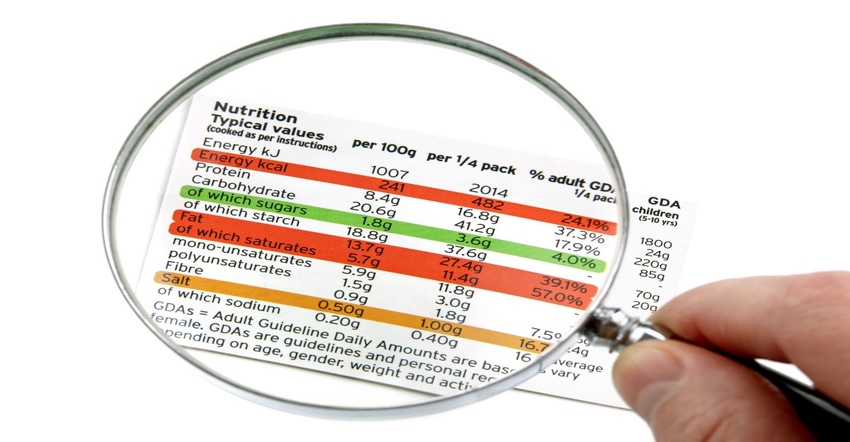A recent meta-analysis indicated food nutrition labels of all kinds are effective in impacting consumer purchase decisions.

The clean label trend has become a full-on movement over recent years and consumers continue to seek out food and beverage made with simple, natural and recognizable ingredients. But identifying a “clean label” isn’t always easy for every consumer and comparing multiple products can be difficult for the uninitiated. However, a recent meta-analysis indicates brands can give consumers a leg up b y using color-coded labels to indicate the general nutritional profile of foods and beverages.
The meta-analysis, published October 5 in PLOS Medicine, “provided comprehensive evidence for the impact of color-coded labels and warnings in nudging consumers’ purchasing behavior toward more healthful products,” the authors wrote (PLoS Med 18(10): e1003765). This analysis aggregated findings from more than 130 previous studies, ranging from 1990 to 2021.
“Despite the variation in label types, labeling formats, position, study population, study design and experimental settings across studies, our comprehensive systematic review and meta-analysis support the call for color front-of-pack nutrition labels,” noted Jing Song, Ph.D., lead author of the meta-analysis.
The authors reviewed several different types of labels, including color-coded “traffic light” and “color spectrum” labels using green, yellow and orange/red to indicate various levels of nutrients as well as warning labels such as octagonal (stop sign-shaped) warnings and straightforward health warnings such as California’s boxed messages (see below).
Regardless of the type of label reviewed, all were successful to some degree in changing consumer purchase behavior. “We found that all color-coded and warning labels appeared to have beneficial effects by encouraging the purchase of more healthful products, reducing the purchase of less healthful options, improving overall nutritional quality, and reducing the energy, sodium/salt, fat, and saturated fat content of processed foods and drinks purchased/chosen,” the authors wrote.
Label effectiveness was based on four central tenets: “(1) comparison or ranking; (2) recall; (3) classification; and (4) mathematical manipulation (estimation) of overall healthfulness and nutrient content.” Based on those areas, the traffic light-style warning labels were found most effective; it was the only label type to show improved understanding in all four areas.
“In summary, our findings suggest that both color-coded labels and warnings appeared effective in nudging consumers’ behavior towards more healthful products by changing the healthfulness perception and eliciting negative emotions,” the authors concluded. “Each type of label may have some different attributes, but the difference between different forms of labels remains to be demonstrated by further studies. Our study can support policymakers to push forward mandatory [front of package label (FOPL)] policies to make use of the full potential of FOPL in directing consumers’ food choice and encouraging reformulation in the food industry.”
About the Author(s)
You May Also Like






